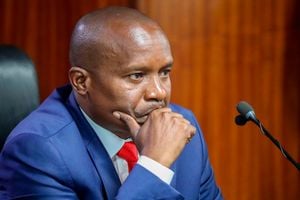Rosy Communications Authority statistics mask the digital divide in Kenya
What you need to know:
- I recently visited my rural county in western Kenya. I could not escape noticing the difference in the quality of ICT services and access to them between urban and rural Kenya.
- Whereas Communications Authority statistics are quite impressive and have been lauded internationally, things are slightly different on the ground – particularly if that ground happens to be in rural Kenya.
- Whereas it is true that internet services are available to most people in rural Kenya, they are however of a different and lower quality.
- It is high time we tackled the digital divide in order to ensure that the 75 percent of Kenyans living in rural areas are not denied access to the digital services that urbanites take for granted.
Like most city dwellers, I rarely get a chance to travel to my rural county in western Kenya. However, last week the death of my aunt Lucia (God rest her soul in peace) demanded that I make the 500km journey.
Though it was a solemn occasion, I could not escape noticing the difference in the quality of ICT services and access to them between urban and rural Kenya.
In its latest 2018 ICT statistics report, the regulator states that 95 percent of the estimated 46 million Kenyans have mobile phones, with about 65 percent of them actively using mobile money transfers.
With respect to the internet, the report states that 78 percent of Kenyans are actively using it – courtesy of the widespread availability of mobile internet signals across the country.
Whereas these statistics are quite impressive and have been lauded internationally, things are slightly different on the ground – particularly if that ground happens to be in rural Kenya.
LOWER-QUALITY SERVICES
As confirmed by the 2016 Access Gap Study commissioned by the regulator, the superior 3G signal is only available in 17 percent of the Kenyan land mass, compared with the 2G signal that covers 45 percent.
Though the population covered by these signals is higher compared with the land mass covered, one simply needs to drive beyond 15 or so kilometers off the major highways to quickly come to terms with this reality.
And the reality is that whereas it is true that internet services are available to most people in rural Kenya, they are however of a different and lower quality.
So as urban Kenya is enjoying high-speed internet delivered over 4G and fibre platforms, most of rural Kenya is having to struggle with the fifteen-year-old 2G technology standards to access the internet.
This is what is commonly known as the digital divide, an economic and social inequality that arises from the differences between urban and rural ICT standards and its associated impact.
The implication of the digital divide on rural communities is that they have limited or restricted access to modern ICT services, particularly those that are delivered over the Cloud or require broadband internet access.
DISCRIMINATORY SPEED
In particular, transaction-based services that are time-sensitive like online banking and online payments as expected on e-government platforms like eCitizen would simply time-out and fail to execute over lower-quality internet connections.
This in itself can be considered discriminatory, because public services are supposed to be enjoyed by all Kenyans who pay taxes, irrespective of whether they reside in urban or rural Kenya.
Furthermore this digital divide goes beyond internet services and includes complementary and supporting infrastructure such as electric power supply.
Just like the ICT statistical reports, the energy sector in Kenya looks promising on paper, with the ministry of Energy reporting that 70 percent of Kenyan households are now connected to the national electrical power grid.
Whereas this may be true, the quality of that power is again the problem.
BETWEEN DARKNESS AND DIMNESS
During my short stay in my rural village, over 50 percent of the time there was absolutely no power and when it did come, the supply was dancing between darkness and dimness.
One really wonders how the laptop project that had been pegged on having reliable power in 22,000 primary schools across the country is surviving with this type of erratic power supply.
In short, the power supply in rural Kenya is not sufficient to ensure that the digital transformation experienced in urban Kenya is cascaded all the way to the constituency and ward levels.
Considering that only about 25 percent of Kenyans live in urban centres, it is high time we tackled the digital divide in order to ensure that the 75 percent of Kenyans living in rural areas are not denied access to the digital services that urbanites take for granted.
Mr Walubengo is a lecturer at Multimedia University of Kenya, Faculty of Computing and IT. Email: [email protected], Twitter: @Jwalu





